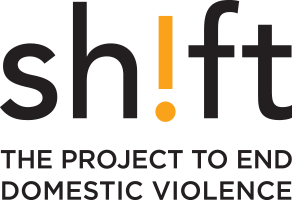What is a nudge approach?
Nudge Approach
Our decisions are highly influenced by our physical, institutional, and sociocultural context, which means that even seemingly unimportant details in our environment can influence us without us consciously noticing. Nudge approaches are designed to influence behaviour by making small, strategic changes to things like processes, social environments, and physical spaces.
Nudges aren’t coercive and don’t force a particular decision; they just make certain choices easier or more attractive. For example, putting fruit at the check-out counter in the grocery store would be considered a nudge, while banning junk food would not.
Why use a nudge approach to engage men?
We all naturally carry biases. Often, we aren’t even aware they exist. Nudges can be a helpful way of shifting conditions in our structures and environments so that it’s easier for us to avoid being impacted by our blind spots.
Also, because nudges are subtle and don’t mandate behaviour change, they can be particularly effective in our work with men because they naturally minimize defensiveness, helping us avoid that “boomerang” effect we see with other interventions.
What are the most promising ways to use a nudge approach?
The great news is that nudges are relatively easy to implement. Nudges are small changes, which usually makes them cost-effective.
When it comes to nudges, it’s all in the design. For example
- you can change processesto reduce bias in hiring (check out the Bias Interrupters toolkits to learn more).
- you can frame messages in ways that engage men as potential allies instead of potential perpetrators (e.g., engaging men as bystanders who are empowered to intervene).
- you can help people feel the need to change by using arts, storytelling, and performance to share the personal impacts of violence and harm.
- you can use language strategically, such as including feminine coded words in a job posting for a traditionally male job.
What is an example of putting a nudge approach into practice?
One example of a promising nudge intervention was done with a U.K. police force that wanted to improve diversity by increasing the number of applicants who passed an entry exam.
Half of the applicants included in the study got a pre-exam email that was framed positively with the goal of priming them for success (using terms like “Congratulations!” and “Good luck”). The other half received emails that had more unnecessary words and phrases that could increase anxiety (phrases like “Please note there is no appeals process for this stage”).
The study found that nudging applicants with a positively framed and supportive email prior to the entry exam had a significant effect; non-white applicants gained 12 percentage points in their percentile ranking while white applicants saw a two-percentage point increase.
These findings show that even an intervention as simple as changing the wording of an email can lead to a significant difference in outcomes.
What else should I know before implementing nudge approaches?
For nudges to be effective, they need to be based on a clear understanding of what factors are contributing to the current patterns of behaviour and what factors might cue something different. This makes them highly nuanced and context-specific. If you don’t have a good, specific understanding of the contextual factors, you could design nudges that don’t work or have the opposite effect of what you intended.
That also means nudges need to be tested and refined. Nudges work differently in different contexts, so they’ll likely involve some trial and error before you get it right.
And while nudges can be incredibly effective, they aren’t a magic bullet. Social issues are complex, and nudges alone won’t solve them.
Read more about nudge approaches:
In addition to the Shift research reports listed earlier, the following resources offer further information on nudge approaches:
- Elizabeth Dozois & Lana Wells – Changing Contexts: A Framework for Engaging Male-Oriented Settings in Gender Equality and Violence Prevention – Practitioners’ Guide
- Behavioural Insights Team – MINDSPACE: Influencing Behaviour Through Public Policy
- Behavioural Insights Team – EAST Framework: Four Simple Ways to Apply Behavioural Insights
- Iris Bohnet – What works: Gender Equality by Design
- Dr. Rory Gallagher – Nudging for Change: An Introduction to Behavioural Insights (lecture)


